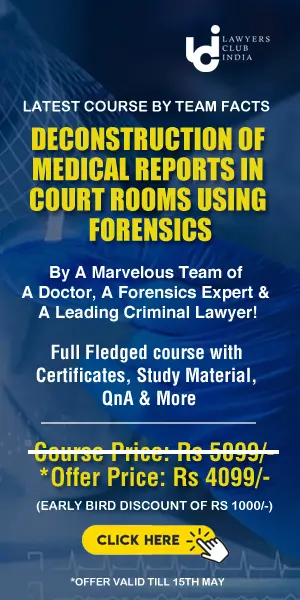Q1. In which of the following cases, Justice Hidaytullah held that the Preamble is the very soul of the Constitution-eternal and unalterable?
(a) S.R. Bommai Case
(b) Golaknath Case
(c) Kesavananda Bharati Case
(d) Minerva Mills Case
Ans: (b)
Explanation:
In the case of Golaknath vs. the State of Punjab, AIR 1967 SC 1643, Justice Hidayatullah held that the preamble is the very soul of the constitution eternal and unalterable.
In Re Berubari Union and Exchange of Enclaves, AIR 1960 SC 845, the Supreme Court stated that the Preamble is not a part of the Indian Constitution.
In Kesavananda Bharati vs. State of Kerala, AIR 1973 SC 1461, the Supreme Court rejected the earlier opinion and held that the preamble is a part of the constitution. It was also held that the preamble can be amended but is subject to the doctrine of Basic Structure.
---------------------
Q2. In the Preamble of the Constitution, the word 'socialist' was added by:
(a) Section 2 of the 42nd Amendment Act
(b) Section 3 of the 42nd Amendment Act
(c) Section 4 of the 42nd Amendment Act
(d) Section 5 of the 42nd Amendment Act
Ans.: (a)
Explanation:
Explanation: Four words were added to the Preamble of the Constitution by the 42nd Amendment Act, of 1976 i.e. Socialist, Secular, And, Integrity
The preamble has only been amended once in the year 1976 through the 42nd Constitutional Amendment Act.
The 42nd Amendment to the Constitution of India came into effect on 03.01.1977.
---------------------
Q3. The expression 'We the people of India' has been borrowed from the Constitution of:
(a) Ireland & USA
(c) U.K.
(b) USSR
(d) None of the above
Ans.: (a)
Explanation:
The American Constitution was the first to begin with a preamble. Many countries including India borrowed this practice from the Constitution of the United States of America. Although nothing has been specified, ‘WE THE PEOPLE OF INDIA’ are considered the most powerful words in the Constitution of India.
The Language of the Preamble has been inspired by the Constitution of Australia.
The text of the Preamble of the Constitution of India aims to secure 'Dignity of the individual and unity and integrity of the nation.'
---------------------
Q4. The mind of the makers of the Constitution of India is reflected in which of the following:
(a) The Preamble
(b) The Fundamental Rights
(c) The Directive Principles of State Policy
(d) The Fundamental Duties
Ans.: (a)
Explanation:
In Golak Nath vs. State of Punjab AIR 1967 SC 1643, it was held that the Preamble of the Constitution of India reflects the minds of the makers of the Constitution of India.
In Re Berubari's case, 1960- ‘The preamble to the constitution is a key to open the mind of the makers.’
Sir Ernest Baker (English Political Scientist) described the Preamble as the ‘key-note’ to the Constitution.
Kanhaiyalal Maniklal Munshi described the Preamble of the Indian Constitution as the political horoscope of the Indian Constitution.
---------------------
Q5. Who amongst the following has drafted the Preamble of the Indian Constitution?
(a) Mr. Rajendra Prasad
(b) Mr. Jawahar Lal Nehru
(c) Mr. B.R. Ambedkar
(d) Mr. Vallabh Bhai Patel
Ans.: (a)
Explanation:
The Preamble of the Indian Constitution is based on the ‘Objective Resolution’ which was moved by the first Prime Minister of India, Pandit Jawaharlal Nehru. The idea of the Preamble was borrowed from the Constitution of the USA.
In the case of Pradeep Jain (Dr.) vs. Union of India, AIR 1984 SC 1420 it was held that the ‘Preamble of the Constitution is framed with great care and deliberation so that it reflects the high purpose and noble objectives of the Constitution makers.’
Four objectives mentioned in the preamble of the Indian Constitution are Justice, Liberty, Equality and Fraternity.
It was adopted after the adoption of the operative Article of the Constitution.
---------------------
Q6. By which one of the following Amendment of the Constitution Sikkim was included in the State of India?
(a) 36th Amendment
(b) 35th Amendment
(c) 7th Amendment
d) 5th Amendment
Ans.: (a)
Explanation:
Article 2A of the Constitution of India – Sikkim is to be associated with the Union was inserted by the 35th Amendment Act, S.2 (w.e.f. 1-3-1975)
Article 2A of the Constitution of India was omitted by the Constitution (Thirty Sixth Amendment) Act, 1975 Section 5(a) (w.e.f.26.04.1975) therefore, Sikkim became the 22nd State of India.
Article 2 of the Constitution empowers the Parliament to admit or establish new states.
In India, at present, there are a total of 28 states and 8 Union Territories.
---------------------
Q7. The doctrine of "double jeopardy" in Article 20(2) of the Constitution of India means
a) No one can be tried and punished more than once for the same offence
(b) One can be tried several times for the same offence
(c) Punishment once awarded cannot be enhanced in appeal or revision
(d) One can be tried more than once but punished only once.
Ans.: (a)
Explanation:
(a) Article 20(1) deals with ex-post facto laws.
(b) Article 20(2) deals with the principle of double jeopardy.
(c) Article 20(3) deals with the principle of protection against self-incrimination.
Article 20 (2) states that no person shall be prosecuted and punished for the same offence more than once. It is based on the common maxim ‘nemo debet bis vexari’, which means that a man must not be put twice in peril for the same offence.
The principle of Double Jeopardy has been borrowed from the 5th Amendment of the US Constitution.
Article 20 (3) states that no person accused of any offence shall be compelled to be a witness against himself. It is based on the common law maxim ‘nemo tenetur prodere accussare seipsum’, which means that no man is bound to accuse himself.
---------------------
Q8. By which of the following Amendment Acts of the Indian Constitution, Right to Education was made a Fundamental Right?
(a) 42nd Amendment
(b) 44th Amendment
(c) 49th Amendment
(d) 86th Amendment
Ans.: (d)
Explanation:
By the 86th Amendment Act, 2002 (w.e.f. 01-04-2010) right to education was added as a fundamental right in Part-Ill of the Constitution, for children in the age group of 6 – 14 years.
86th Amendment Act added Article 45 in Part IV (DPSP) which directed the State to provide for early care and education for children below the age of 6 years.
It also added clause (k) under the Fundamental Duties (Part IV A) which states that it shall be the duty of a parent or guardian to provide education to a child between the ages of 6 and 14 years.
---------------------
Q9. In which of the following cases it was held by the Supreme Court that the right to trade on pavements is a Fundamental Right?
(a) Sukumar Mukherjee vs. State of Bengal.
(b) Fertilizer Corporation Workers' Union, Syndri vs. Union of India.
(c) P.A. Inamdar vs. State of Maharashtra.
(d) Sodan Singh vs. New Delhi Municipal Committee.
SLIDE 6
Ans.: (d)
Explanation:
In Sodan Singh vs. New Delhi Municipal Committee, AIR 1989 SC 1988 petitioners claimed the right to engage in trading business on the pavements of roads of the city of Delhi and the Supreme Court recognised this right subject to certain restrictions.
P. A. Inamdar v State of Maharashtra is a landmark case in Indian legal history that dealt with the issue of minority educational institutions' autonomy and their reservation policies.
---------------------
Q10. Right to life does not include Right to die was held in
(a) P. Rathinam vs. Union of India.
(b) State vs. Sanjay Kumar Bhatia.
(c) Chenna Jagdeshwar vs. State of Andhra Pradesh.
(d) Gian Kaur vs. State of Punjab.
SLIDE 10
Ans.: (d)
Explanation:
In Gian Kaur vs. State of Punjab, 1996 AIR 946 a five judge Constitutional Bench held that the ‘right to life’ is inherently inconsistent with the ‘right to die’ as is ‘death’ with ‘life’.
In P Rathinam vs Union of India 1994, it was held that Article 21 (Right to Life) includes the Right to Die.
In Aruna Shaunbag vs Union of India 2011, the Supreme Court legalised passive euthanasia in India and issued a set of broad guidelines.
State vs. Sanjay Kumar Bhatia was the first case where the Right to Die was brought before an Indian Court and the Delhi High Court criticised section 309 (Attempt to Commit Suicide).
Join LAWyersClubIndia's network for daily News Updates, Judgment Summaries, Articles, Forum Threads, Online Law Courses, and MUCH MORE!!"
Tags :Others

















